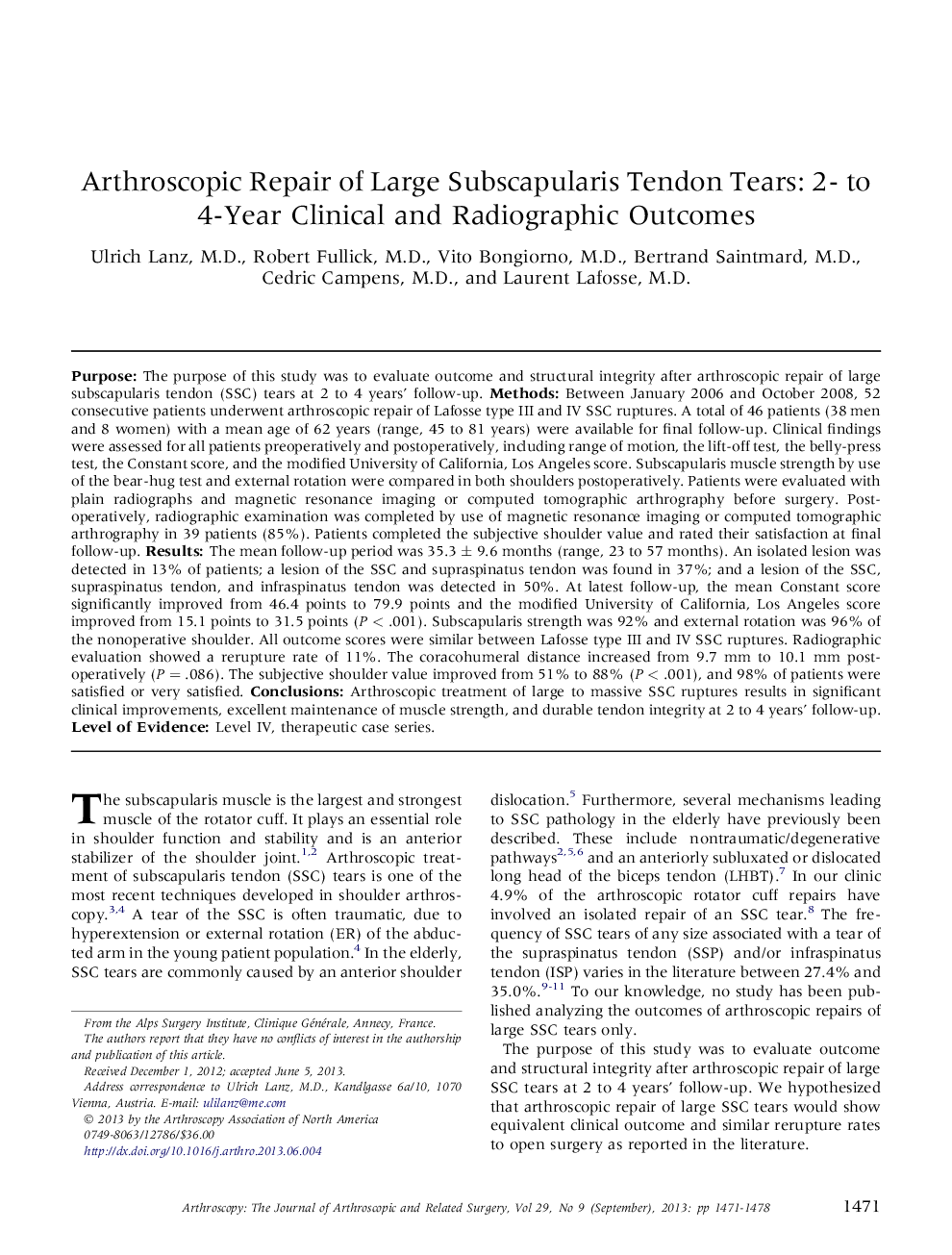| Article ID | Journal | Published Year | Pages | File Type |
|---|---|---|---|---|
| 4043851 | Arthroscopy: The Journal of Arthroscopic & Related Surgery | 2013 | 8 Pages |
PurposeThe purpose of this study was to evaluate outcome and structural integrity after arthroscopic repair of large subscapularis tendon (SSC) tears at 2 to 4 years' follow-up.MethodsBetween January 2006 and October 2008, 52 consecutive patients underwent arthroscopic repair of Lafosse type III and IV SSC ruptures. A total of 46 patients (38 men and 8 women) with a mean age of 62 years (range, 45 to 81 years) were available for final follow-up. Clinical findings were assessed for all patients preoperatively and postoperatively, including range of motion, the lift-off test, the belly-press test, the Constant score, and the modified University of California, Los Angeles score. Subscapularis muscle strength by use of the bear-hug test and external rotation were compared in both shoulders postoperatively. Patients were evaluated with plain radiographs and magnetic resonance imaging or computed tomographic arthrography before surgery. Postoperatively, radiographic examination was completed by use of magnetic resonance imaging or computed tomographic arthrography in 39 patients (85%). Patients completed the subjective shoulder value and rated their satisfaction at final follow-up.ResultsThe mean follow-up period was 35.3 ± 9.6 months (range, 23 to 57 months). An isolated lesion was detected in 13% of patients; a lesion of the SSC and supraspinatus tendon was found in 37%; and a lesion of the SSC, supraspinatus tendon, and infraspinatus tendon was detected in 50%. At latest follow-up, the mean Constant score significantly improved from 46.4 points to 79.9 points and the modified University of California, Los Angeles score improved from 15.1 points to 31.5 points (P < .001). Subscapularis strength was 92% and external rotation was 96% of the nonoperative shoulder. All outcome scores were similar between Lafosse type III and IV SSC ruptures. Radiographic evaluation showed a rerupture rate of 11%. The coracohumeral distance increased from 9.7 mm to 10.1 mm postoperatively (P = .086). The subjective shoulder value improved from 51% to 88% (P < .001), and 98% of patients were satisfied or very satisfied.ConclusionsArthroscopic treatment of large to massive SSC ruptures results in significant clinical improvements, excellent maintenance of muscle strength, and durable tendon integrity at 2 to 4 years' follow-up.Level of EvidenceLevel IV, therapeutic case series.
